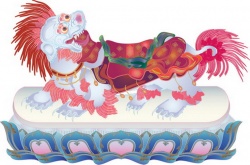Chödung Karmo
The Chödung Karmo (“White Dharma Conch”) Translation Group was founded in 2010 at the International Buddhist Academy in Kathmandu/Nepal to help fulfill the late Khenchen Appey Rinpoche’s vision for the preservation and transmission of the Buddha Dharma.
Khenchen Appey Rinpoche (1927-2010), the founder of the International Buddhist Academy (IBA), was a teacher of teachers renowned for his mastery of both sutra and tantra.
His vision and compassion inspired us to form the Chödung Karmo Translation Group in order to make Dharma more accessible to the world. Rinpoche selected over 20 essential Tibetan treatises for us to translate into English and other languages.
The authors of those texts include some of the greatest luminaries of Tibet such as Sakya Pandita, Rongtön Sheja Kunrig and Gorampa Sönam Senge. We are excited that this immense wealth of Buddhist philosophy and practice from old Tibet will soon be available to a worldwide modern audience. These texts cover most fields of traditional Buddhist scholarship (listed below) as well as practice texts immediately accessible to a general audience.
1) Abhidharma, ‘Higher Teachings’ (chos mngon pa) The science of the outer and inner world of experience according to Buddhist principles;
2) Prajñāpāramitā, ‘the Perfection of Wisdom’ (sher phyin) A presentation of the path to enlightenment and the stages of realization;
3) Madhyamaka, ‘the Philosophy of the Middle Way’ (dbu ma) A most profound view of reality, the so-called philosophy of emptiness;
4) Pramāṇa, ‘Means of Valid Cognition’ (tshad ma) The means to acquire valid knowledge and to remove doubts;
5) Yogācāra, ‘School of Yoga Practice’ (rnal ‘byor spyod pa) A school of thought intimately linked with the practice of meditation;
6) The Three Vows (sdom gsum) A presentation of the three sets of vows related to the three vehicles of Buddhist practice.
